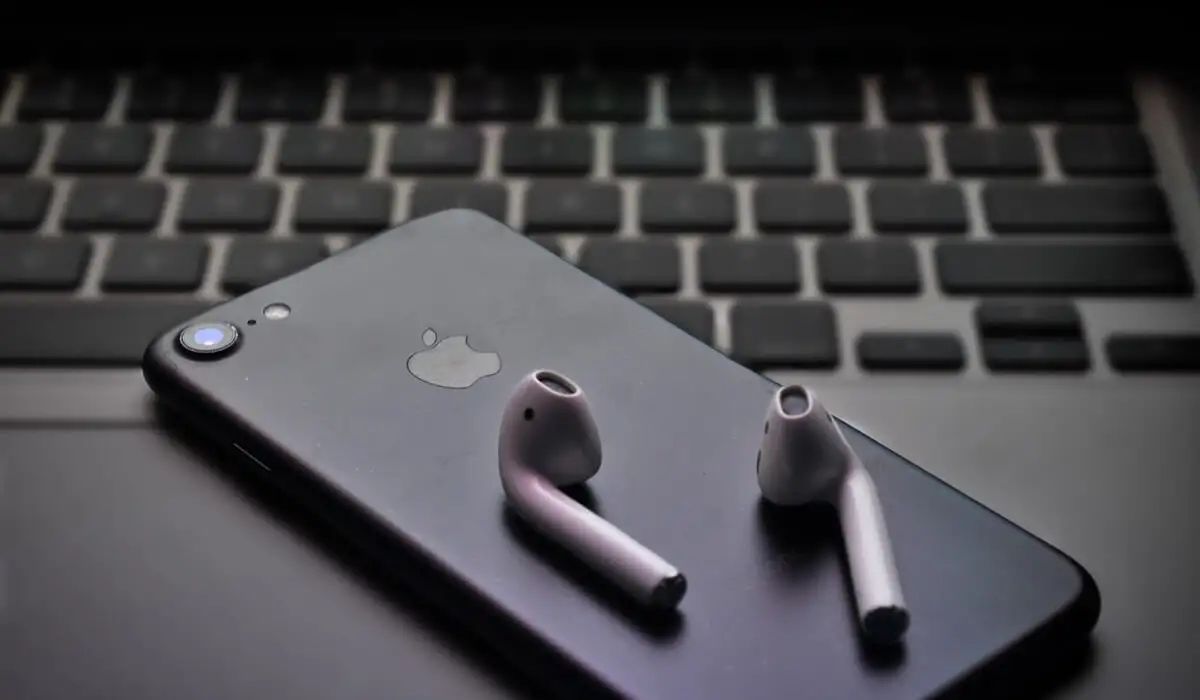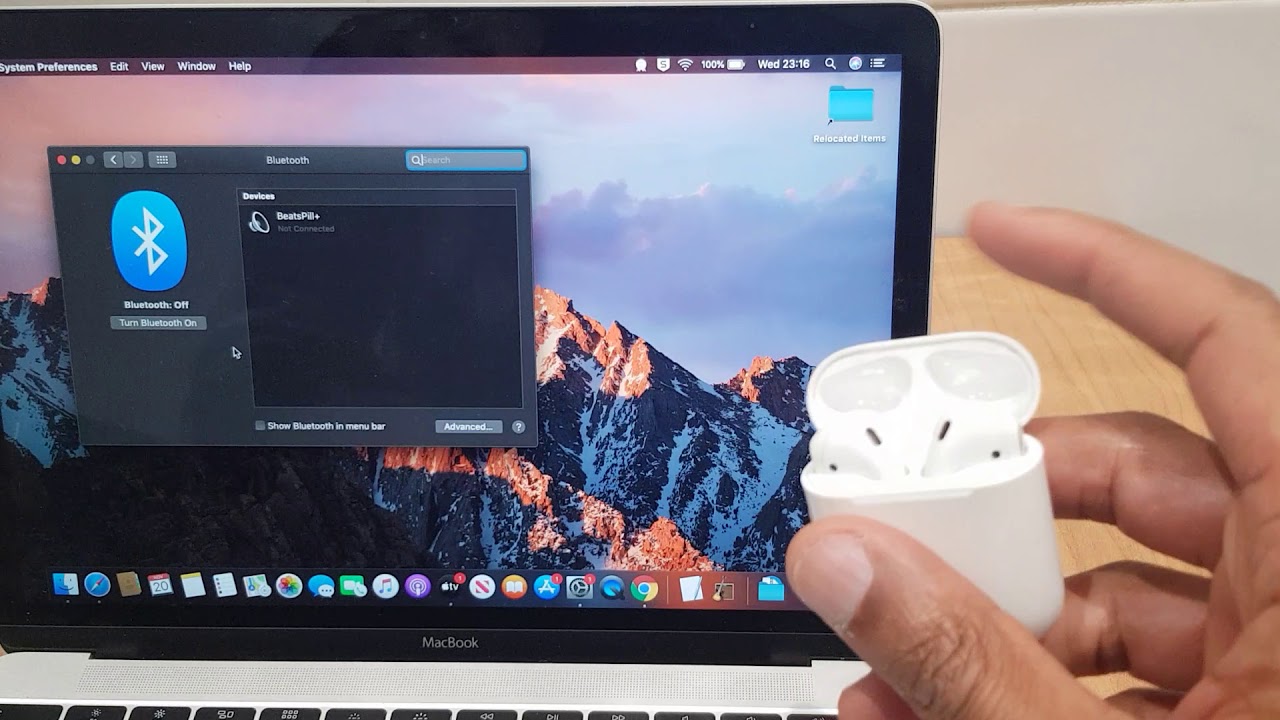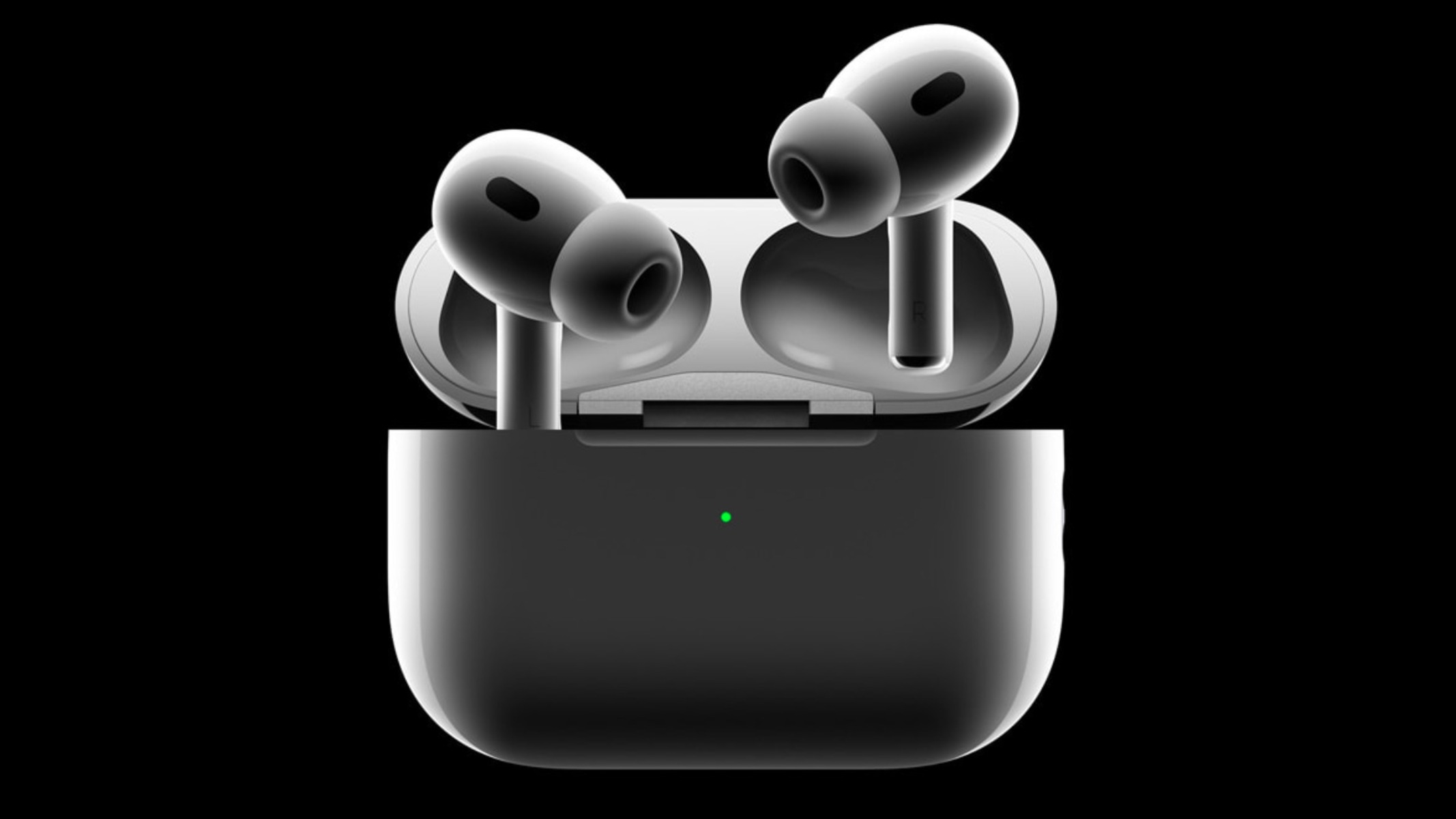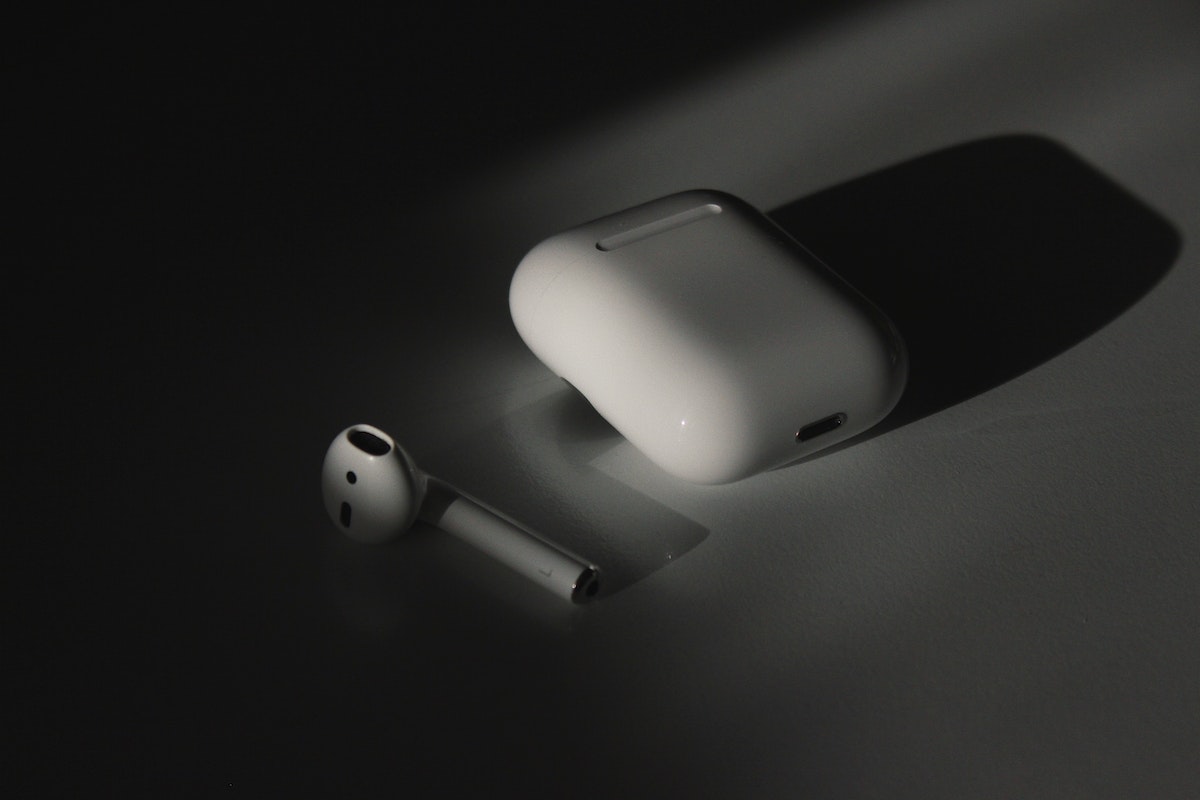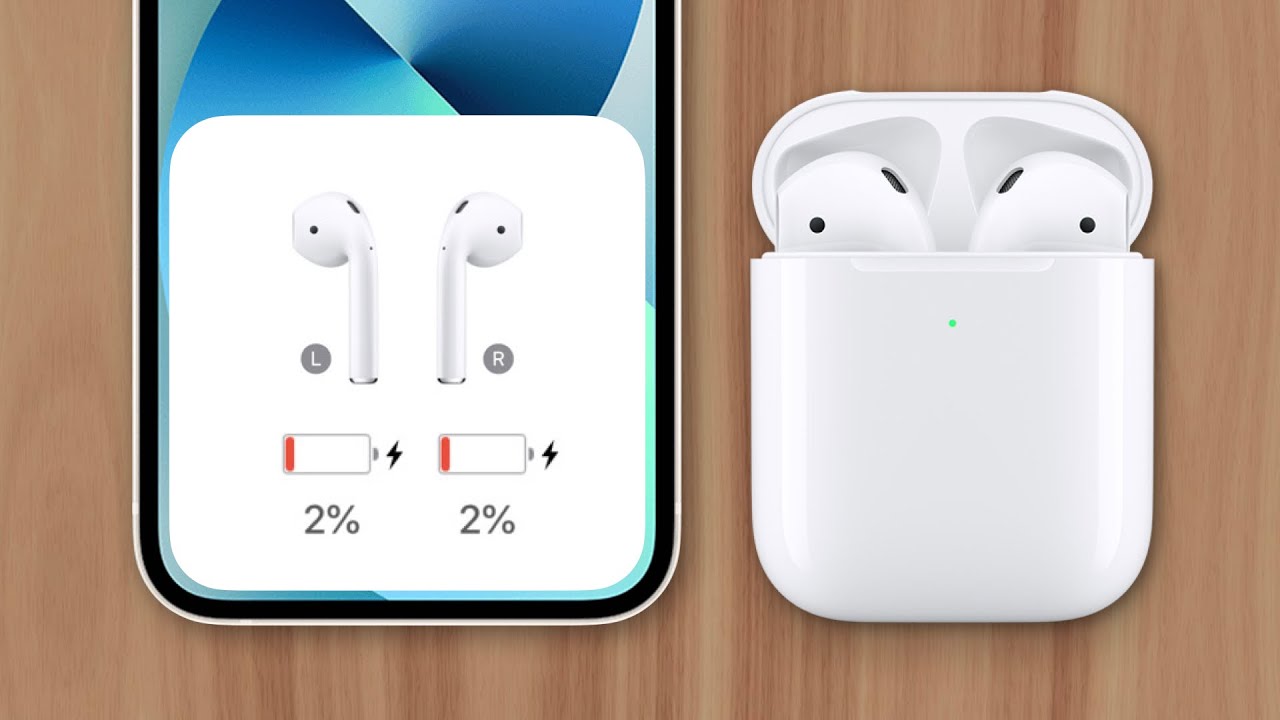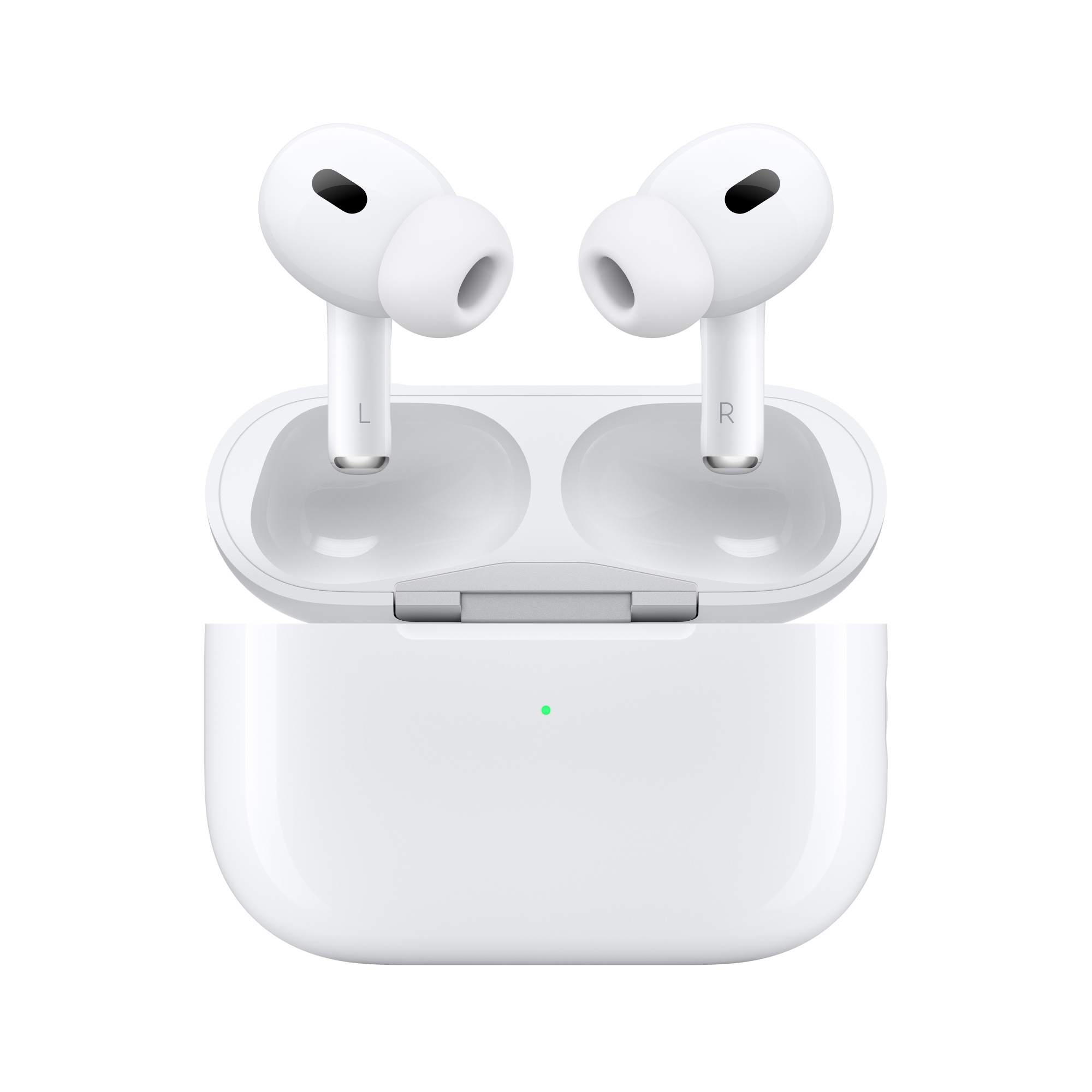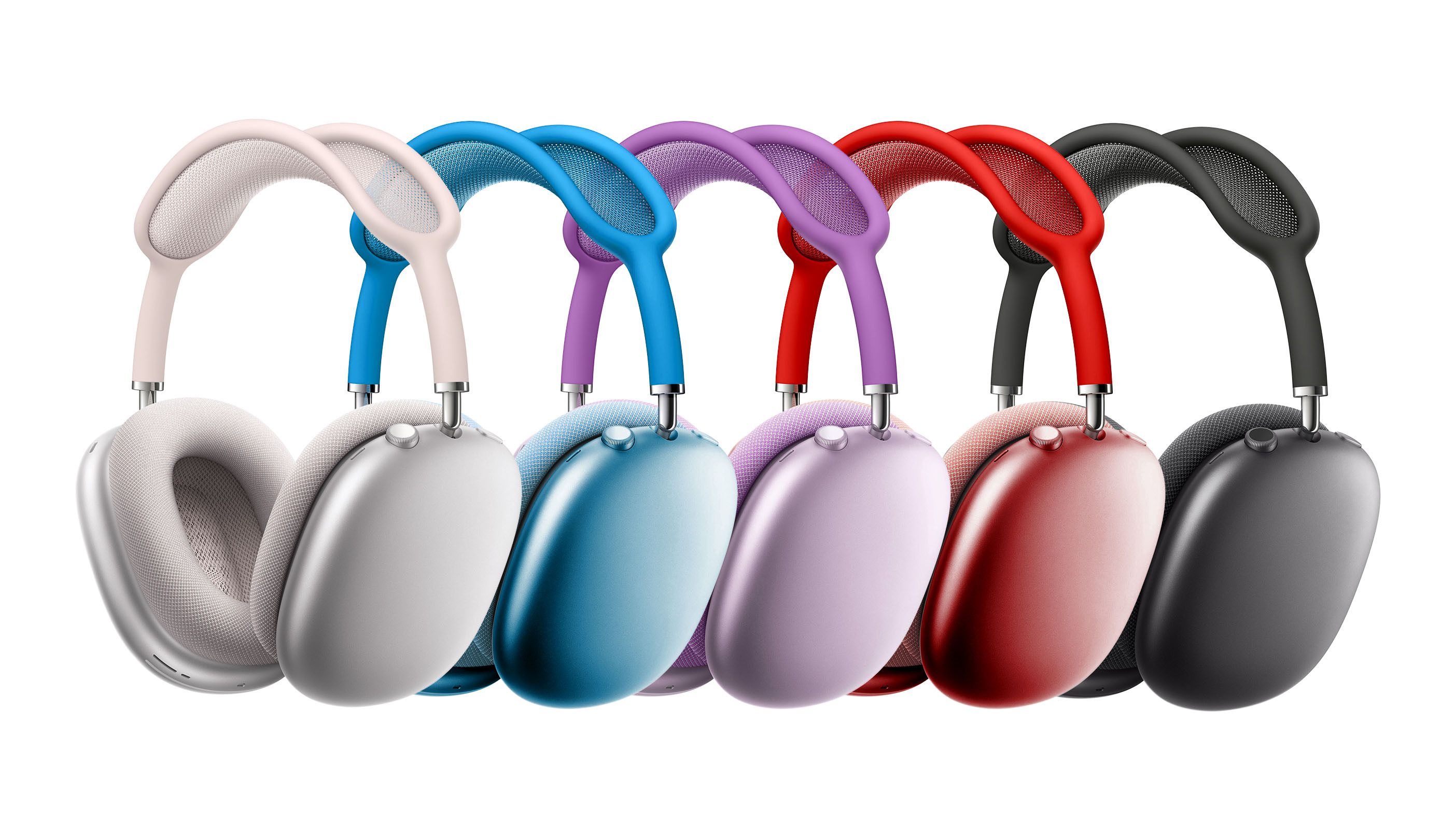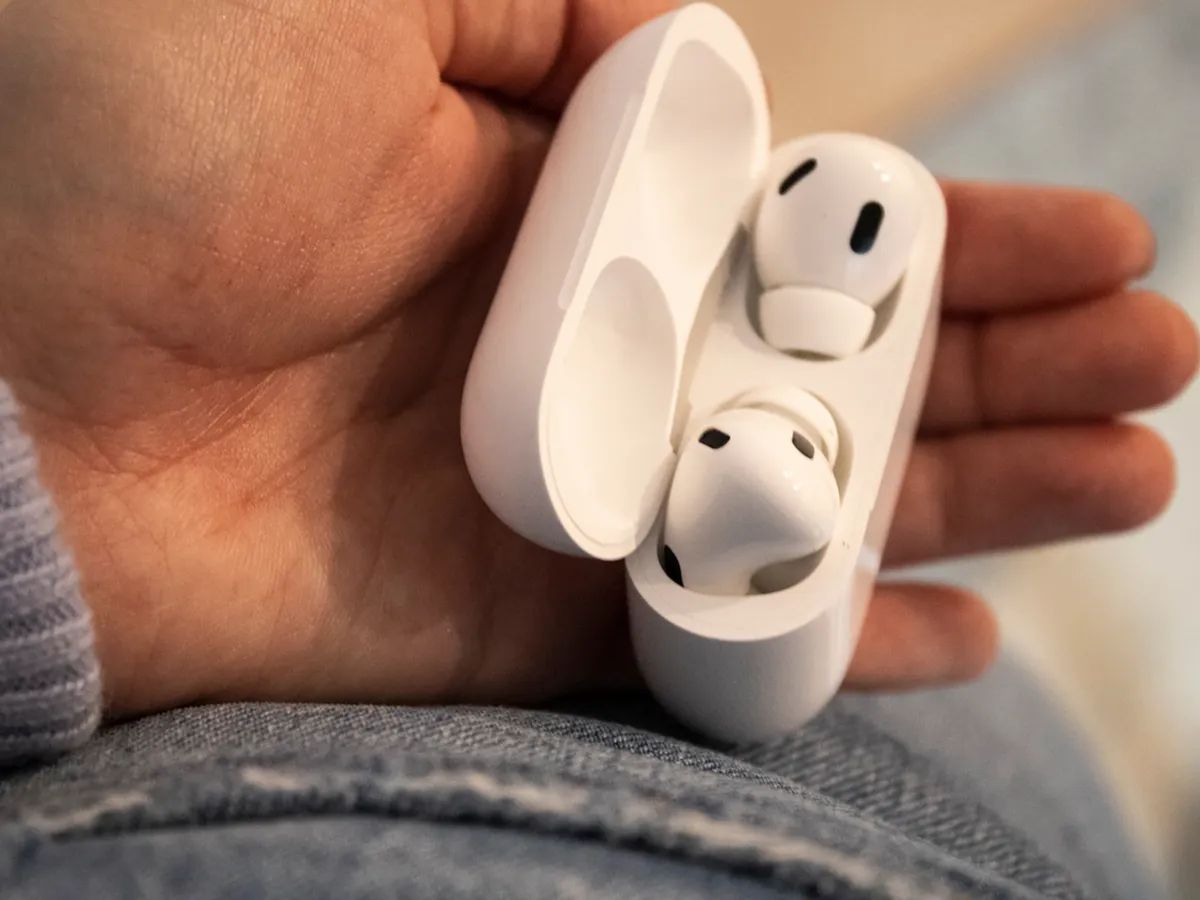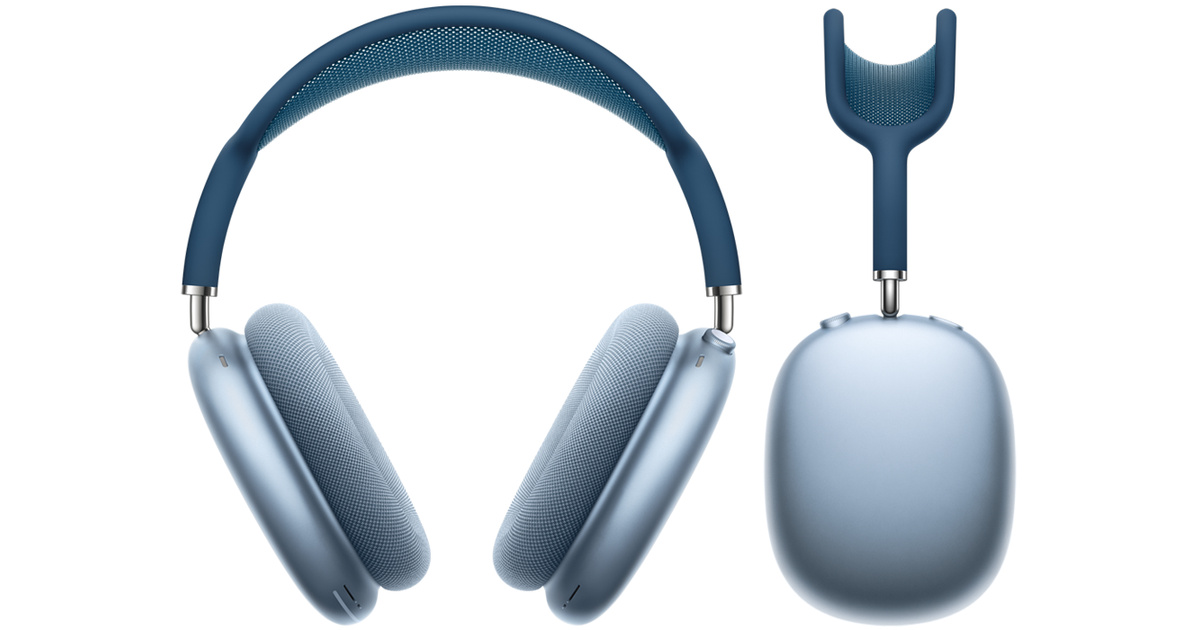Introduction
Have you ever experienced the frustration of trying to connect your Airpods to your MacBook, only to find that they won’t connect? Don’t worry, you’re not alone. This is a common issue that many Airpods users encounter. There can be several reasons why your Airpods won’t connect to your MacBook, ranging from simple connectivity issues to software glitches.
Understanding these reasons and knowing how to troubleshoot them can help you get your Airpods connected to your MacBook in no time. In this article, we will explore the common reasons why your Airpods may not be connecting to your MacBook and provide you with troubleshooting steps to resolve the issue.
Whether you rely on your Airpods for listening to music, making hands-free calls, or enjoying immersive sound while watching movies on your MacBook, it’s frustrating when they don’t work as expected. So, let’s dive in and find out why your Airpods won’t connect to your MacBook and how to fix the problem.
Common Reasons Airpods Won’t Connect to MacBook
There are several common reasons why your Airpods may not be connecting to your MacBook. Understanding these reasons can help you troubleshoot the issue more effectively. Here are some possible causes:
- Bluetooth connectivity issues: Bluetooth connectivity problems can prevent your Airpods from connecting to your MacBook. It could be due to a weak Bluetooth signal, interference from other devices, or a problem with the Bluetooth hardware on either the Airpods or the MacBook.
- Outdated software: Software updates often include bug fixes and improvements, so outdated software can lead to compatibility issues. If your MacBook or Airpods are running outdated software versions, it could be the reason why they’re not connecting.
- Pairing mode issues: For your Airpods to connect to your MacBook, they need to be in pairing mode. If they’re not in pairing mode or if the pairing process was interrupted, it can prevent the connection from being established.
- Interference from other devices: Other devices near your MacBook or Airpods, such as smartphones, tablets, or other Bluetooth devices, can interfere with the Bluetooth signal and prevent the connection.
- Bluetooth module issues: Sometimes, the Bluetooth module on your MacBook can encounter problems that affect the connectivity. It may need to be reset or updated to fix the issue.
Now that you have a better understanding of the common reasons behind Airpods not connecting to a MacBook, let’s explore the troubleshooting steps to resolve this frustrating problem.
Troubleshooting Steps
When your Airpods won’t connect to your MacBook, there are several troubleshooting steps you can try to resolve the issue. These steps are relatively simple and can often solve the problem without much hassle. Here are the recommended troubleshooting steps:
- Ensure Bluetooth is Enabled on MacBook: First, check if Bluetooth is enabled on your MacBook. Go to the Apple menu, select “System Preferences,” and click on “Bluetooth.” Make sure the “Bluetooth” option is turned on.
- Verify Airpods are in Pairing Mode: Place your Airpods in their charging case, open the lid, and press and hold the setup button on the back until the LED on the case starts flashing white. This means your Airpods are in pairing mode.
- Restart Airpods and MacBook: Sometimes, a simple restart can resolve connectivity issues. Restart both your Airpods and MacBook by turning them off and on again.
- Update MacBook and Airpods Software: Check for any software updates available for your MacBook and Airpods. Keeping your devices up to date can resolve compatibility issues and improve their performance. Go to “System Preferences” on your MacBook and click on “Software Update.” For Airpods firmware updates, connect them to your MacBook and open the Bluetooth menu.
- Reset Bluetooth Module on MacBook: If you’re still experiencing connection problems, you can try resetting the Bluetooth module on your MacBook. Go to “System Preferences,” click on “Bluetooth,” and then click on the “X” icon next to your Airpods. After that, restart your MacBook and repair the Airpods.
- Forget Airpods on MacBook and Re-pair: If none of the above steps work, you can try forgetting your Airpods on your MacBook and re-pairing them. Go to “System Preferences,” click on “Bluetooth,” right-click on your Airpods name, and select “Forget This Device.” Then, put your Airpods in pairing mode again and pair them with your MacBook.
- Check for Interference: Move your MacBook and any other nearby devices away from potential sources of interference, such as Wi-Fi routers, microwave ovens, and cordless phones. These devices can cause disruption in the Bluetooth connection.
- Reset Airpods: If all else fails, you can try resetting your Airpods to factory settings. Place them in the charging case, keep the lid open, press and hold the setup button for about 15 seconds until the LED on the case turns amber, and then release the button.
By following these troubleshooting steps, you should be able to resolve the issue of your Airpods not connecting to your MacBook. If the problem persists after trying these steps, it may be necessary to contact Apple support for further assistance.
Ensure Bluetooth is Enabled on MacBook
One of the first steps to take when your Airpods won’t connect to your MacBook is to ensure that Bluetooth is enabled on your MacBook. If Bluetooth is turned off, it will prevent your Airpods from establishing a connection. Here’s how you can check and enable Bluetooth on your MacBook:
- Click on the Apple logo in the top-left corner of your screen and select “System Preferences” from the drop-down menu.
- In the System Preferences window, click on the “Bluetooth” icon.
- Make sure that the “Bluetooth” option is turned on by checking the box next to it. If it is already turned on, you can try toggling it off and on again to refresh the Bluetooth connection.
- If Bluetooth was turned off, you should see an option to “Turn Bluetooth On” in the Bluetooth settings window. Click on it to enable Bluetooth on your MacBook.
Once Bluetooth is enabled, your MacBook will start searching for nearby Bluetooth devices, including your Airpods. Make sure your Airpods are in pairing mode (as mentioned in the previous section) so that they can be discovered by your MacBook.
If Bluetooth was already enabled on your MacBook and you’re still unable to connect your Airpods, try toggling Bluetooth off and on again. Sometimes, a simple reset can help resolve minor connectivity issues.
By ensuring Bluetooth is enabled on your MacBook, you are taking the first step towards establishing a connection between your Airpods and your MacBook. If this step doesn’t resolve the issue, proceed to the next troubleshooting step.
Verify Airpods are in Pairing Mode
For your Airpods to connect to your MacBook, they need to be in pairing mode. Pairing mode allows your MacBook to discover and establish a connection with your Airpods. Here’s how you can verify if your Airpods are in pairing mode:
- Place your Airpods in their charging case.
- Open the lid of the charging case.
- Look for the small button located on the back of the case. This is the setup button.
- Press and hold the setup button for a few seconds until you see the status light on the front of the case start flashing white.
When the status light on the front of the Airpods case is flashing white, it indicates that your Airpods are in pairing mode and ready to be connected to your MacBook.
If you don’t see the status light flashing white, make sure your Airpods are charged. You can connect the charging case to a power source using the Lightning cable that came with your Airpods. Once charged, open the lid of the charging case again and press the setup button to put them in pairing mode.
Putting your Airpods in pairing mode is essential because it allows your MacBook to detect them and establish the necessary connection. Without pairing mode enabled, your MacBook won’t be able to find your Airpods during the Bluetooth device scanning process.
After verifying that your Airpods are in pairing mode, proceed to the next troubleshooting step if you’re still encountering issues connecting them to your MacBook.
Restart Airpods and MacBook
If you are experiencing difficulties connecting your Airpods to your MacBook, a simple restart of both your Airpods and your MacBook can often resolve the issue. Restarting these devices can help refresh their settings and establish a clean connection. Here’s how you can restart your Airpods and MacBook:
- Start with your Airpods. Place them back into the charging case.
- Close the lid of the charging case and wait for a few seconds.
- Open the lid of the charging case and remove your Airpods.
- Now, let’s restart your MacBook. Click on the Apple logo in the top-left corner of your screen and choose “Restart” from the drop-down menu.
Wait for your MacBook to fully shut down and restart. Once it’s back up and running, you can proceed with trying to connect your Airpods again.
Restarting both your Airpods and MacBook allows them to start fresh and establish a new Bluetooth connection. This can help resolve any temporary glitches or inconsistencies that may have been causing the connection issue.
If the connection problem persists after the restart, move on to the next troubleshooting step to further investigate and resolve the issue.
Update MacBook and Airpods Software
Outdated software can often cause compatibility issues, leading to problems with connecting your Airpods to your MacBook. To ensure smooth and seamless connectivity, it’s important to keep both your MacBook and Airpods software up to date. Here’s how you can update the software:
Update MacBook Software:
- Click on the Apple logo in the top-left corner of your screen and select “System Preferences” from the drop-down menu.
- In the System Preferences window, click on “Software Update.”
- Your MacBook will check for any available updates. If there are updates available, click on the “Update Now” button.
- Follow the on-screen instructions to download and install the updates.
- Once the updates are installed, restart your MacBook if prompted.
Update Airpods Firmware:
- Ensure that your Airpods are connected to your MacBook.
- Open the “Bluetooth” menu by clicking on the Bluetooth icon in the menu bar.
- Find your Airpods in the list of available devices and click on the “i” (info) button next to them.
- In the device information window, click on the “Firmware Version” to check if an update is available.
- If an update is available, follow the on-screen instructions to download and install the firmware update.
Updating your MacBook and Airpods software can fix any compatibility issues and improve the overall performance of both devices. Additionally, firmware updates for your Airpods can contain bug fixes and enhancements specifically designed to address connectivity issues.
Once you have updated the software on both your MacBook and Airpods, attempt to connect your Airpods to your MacBook again. If the connection issue still persists, proceed to the next troubleshooting step to further troubleshoot the problem.
Reset Bluetooth Module on MacBook
If you’re still facing issues connecting your Airpods to your MacBook, resetting the Bluetooth module on your MacBook can help resolve any underlying issues. Resetting the Bluetooth module can clear any corrupted settings and restore it to its default state. Here’s how you can reset the Bluetooth module on your MacBook:
- Click on the Apple logo in the top-left corner of your screen and select “System Preferences” from the drop-down menu.
- In the System Preferences window, click on “Bluetooth.”
- Find your Airpods in the list of paired devices.
- Right-click on your Airpods and select the “Remove” or “Forget This Device” option.
- Once your Airpods are removed, click on the Apple logo again and select “Shut Down” to turn off your MacBook.
- After your MacBook completely shuts down, wait for a few minutes.
- Turn on your MacBook again by pressing the power button.
- Once your MacBook restarts, go back to the Bluetooth settings and repair your Airpods with your MacBook.
Resetting the Bluetooth module can help resolve any software-related issues that might be hindering the connection between your Airpods and MacBook. By removing your Airpods from the list of paired devices and restarting your MacBook, you essentially start with a clean slate, allowing for a fresh connection.
After resetting the Bluetooth module and repairing your Airpods with your MacBook, attempt to connect them again. If the issue persists, move on to the next troubleshooting step to further address the problem.
Forget Airpods on MacBook and Re-pair
If you’ve tried the previous troubleshooting steps and are still unable to connect your Airpods to your MacBook, forgetting your Airpods on your MacBook and re-pairing them might help resolve the issue. Forgetting the Airpods removes any existing pairing information and allows you to set up a fresh connection. Here’s how you can forget your Airpods on your MacBook and re-pair them:
- Click on the Apple logo in the top-left corner of your screen and select “System Preferences” from the drop-down menu.
- In the System Preferences window, click on “Bluetooth.”
- Find your Airpods in the list of devices and right-click on them.
- Select the “Remove” or “Forget This Device” option.
- Confirm the action if prompted.
- Now, put your Airpods back into the charging case and close the lid.
- Wait for a few seconds and then open the lid of the charging case.
- Press and hold the setup button on the back of the case until the LED light starts flashing.
- On your MacBook, navigate back to the Bluetooth settings and wait for your Airpods to appear in the list of available devices.
- Select your Airpods from the list and click on the “Connect” button.
- Follow the on-screen instructions to complete the pairing process.
Forgetting your Airpods on your MacBook and re-pairing them establishes a new connection between the devices, which can help resolve any persistent connectivity issues. The process is similar to pairing your Airpods with your MacBook for the first time.
After re-pairing your Airpods, try connecting them to your MacBook again. If the problem persists, proceed to the next troubleshooting step to further investigate and address the issue.
Check for Interference
Interference from other devices can disrupt the Bluetooth signal and prevent a stable connection between your Airpods and MacBook. It’s important to check for potential sources of interference and eliminate them to improve connectivity. Here are a few steps you can take to check for interference:
- Ensure that there are no devices or objects obstructing the direct line of sight between your Airpods and MacBook. Physical barriers can weaken the Bluetooth signal.
- Move your MacBook and any other nearby devices away from potential sources of interference, such as Wi-Fi routers, microwave ovens, cordless phones, and other devices that operate on the 2.4 GHz frequency.
- If you have other Bluetooth devices connected to your MacBook, temporarily disconnect them to see if they are causing any interference. You can reconnect them later, once the issue is resolved.
- Turn off any nearby devices that may be using Bluetooth or wireless signals and could potentially interfere with the connection between your Airpods and MacBook.
- Check if there are any electrical devices in the vicinity that could be causing electromagnetic interference. In some cases, electrical appliances or wiring can interfere with Bluetooth signals.
- Try switching your MacBook and Airpods to different locations within the room to avoid any potential sources of interference.
By minimizing and avoiding potential sources of interference, you can help improve the Bluetooth signal strength and enhance the chances of a successful connection between your Airpods and MacBook.
If you have followed the above steps and are still experiencing connection issues, proceed to the next troubleshooting step to further troubleshoot the problem.
Reset Airpods
If you’ve tried all the previous troubleshooting steps and are still unable to connect your Airpods to your MacBook, resetting your Airpods to their factory settings might help resolve the issue. Resetting your Airpods clears all the saved settings and configurations, allowing you to start fresh. Here’s how you can reset your Airpods:
- Place your Airpods back into the charging case.
- Close the lid of the charging case and wait for a few seconds.
- Open the lid of the charging case.
- Press and hold the setup button on the back of the case for about 15 seconds until the LED indicator on the front of the case flashes amber.
- Release the setup button.
Once the reset process is complete, your Airpods will no longer be paired with any devices and will need to be set up again. You can follow the initial pairing steps to connect your Airpods to your MacBook.
Resetting your Airpods can help eliminate any persistent software or configuration issues that might be causing the connection problem. By returning your Airpods to their factory settings, you can establish a clean and fresh connection between your Airpods and MacBook.
After resetting your Airpods, attempt to connect them to your MacBook again. If the issue persists, it is recommended to reach out to Apple support for further assistance.
Conclusion
Connecting your Airpods to your MacBook is meant to be a seamless and convenient experience, but encountering connection issues can be frustrating. By understanding the common reasons why your Airpods may not be connecting and following the troubleshooting steps provided, you can overcome these issues and enjoy uninterrupted use of your Airpods with your MacBook.
We explored common reasons for Airpods connectivity problems, including Bluetooth issues, outdated software, pairing mode issues, interference, and Bluetooth module issues. The troubleshooting steps covered in this article, such as ensuring Bluetooth is enabled on your MacBook, verifying Airpods are in pairing mode, restarting both your Airpods and MacBook, updating your MacBook and Airpods software, resetting the Bluetooth module, forgetting Airpods on your MacBook and re-pairing, checking for interference, and resetting your Airpods, are aimed at resolving these issues.
Remember to follow these steps in the recommended order and test the connection after each step to determine if the issue is resolved. If you have exhausted all the troubleshooting steps and are still unable to connect your Airpods to your MacBook, reaching out to Apple support for further assistance is recommended.
With patience and perseverance, you can overcome the Airpods connectivity issue and continue enjoying your favorite music, calls, and media on your MacBook with the convenience of wireless Airpods.







